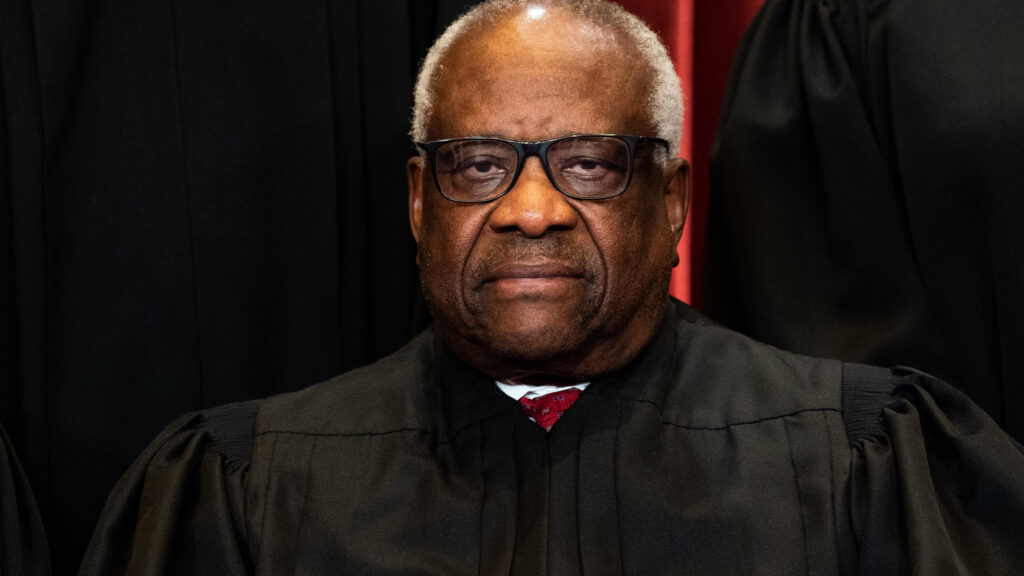Justices Rule 6-3 To Protect Gun Rights
By Richard Luthmann
The Supreme Court ruled on June 14 that the Bureau of Alcohol, Tobacco, Firearms, and Explosives (ATF) overstepped its authority by banning bump stocks. In Garland v. Cargill, a SCOTUS gun rights ruling decided that bump stocks do not turn semiautomatic rifles into machine guns.
“We conclude that a semiautomatic rifle with a bump stock is not a ‘machinegun’ because it does not fire more than one shot ‘by a single function of the trigger,’” wrote Justice Clarence Thomas in the majority opinion.

The ruling was 6–3, with Justice Sonia Sotomayor dissenting alongside the other two liberal justices. Sotomayor argued that bump stocks essentially convert semiautomatic weapons into machine guns.
“When I see a bird that walks like a duck, swims like a duck, and quacks like a duck, I call that bird a duck,” she said.
She also stated that the “majority’s artificially narrow definition hampers the Government’s efforts to keep machine guns from dangerous individuals like the Las Vegas shooter.”
The ATF ban came after the 2017 Las Vegas shooting, where a gunman used bump stock-equipped firearms. The ATF had previously allowed nonmechanical bump stocks, which lack a spring.
Legal Journey and Reaction
The U.S. Court of Appeals for the Fifth Circuit had initially upheld a district court decision in favor of the ATF rule. However, an en banc review reversed that decision. Justice Thomas’s opinion upheld the en banc review, siding with Michael Cargill, a radio host who challenged the ATF rule.
Michael Cargill celebrated the SCOTUS gun rights ruling with a video posted on social media. He predicted the ruling would prevent the ATF from regulating other firearm parts.
“We now have a case that sets a precedent for defending our Second Amendment rights,” he said.
Congressional Authority
The attorneys in Garland v. Cargill focused on interpreting the phrases “automatically” and “single function of the trigger” within the National Firearms Act. They argued whether these terms applied to bump stocks.
Justice Samuel Alito, in a concurring opinion, urged Congress to act. He referring to the 2017 Las Vegas shooting. “An event that highlights the need to amend a law does not itself change the law’s meaning.”
He added, “There is a simple remedy for the disparate treatment of bump stocks and machine guns. Congress can amend the law—and perhaps would have done so already if ATF had stuck with its earlier interpretation. Now that the situation is clear, Congress can act.”
The SCOTUS gun rights ruling noted that after the Las Vegas shooting, then-Sen. Dianne Feinstein (D-Calif.) warned that legislation was necessary to ban bump stocks.
Political Responses
President Joe Biden and other Democratic politicians reacted strongly. Rep. Pramila Jayapal (D-Wash.), chair of the Congressional Progressive Caucus, called the decision “horrible” and predicted it would lead to more gun deaths.
Rep. Gerry Connolly (D-Va.) called the decision “shameful” and urged Congress to pass a bump stock ban authored by Rep. Dina Titus (D-Nev.).
President Biden released a statement calling for Congress to act. “Ban bump stocks, pass an assault weapon ban, and take additional action to save lives—send me a bill, and I will sign it immediately.”
Republican Rep. Thomas Massie (Ky.) praised the decision, saying it restored the proper separation of powers between the executive and legislative branches.
“In our Constitutional republic, Congress makes the laws, not the administrative branch,” he wrote. “The Supreme Court just acknowledged this in a 6 to 3 decision invalidating Trump’s bump-stock ban.”
Single Function of the Trigger

Much of the debate focused on whether bump stocks allow a single trigger pull to initiate rapid fire. Jonathan Mitchell, attorney for Michael Cargill, argued that bump stocks only allow one bullet per trigger pull. He contended that using bump stocks does not meet the statutory language of “single function of the trigger.” Firearm users must apply pressure to maintain accelerated fire.
Principal Deputy Solicitor General Brian Fletcher and Justice Ketanji Brown Jackson argued that bump stocks allow users to initiate a rapid firing process with a single trigger pull.
In his majority opinion, Justice Thomas stated that “nothing changes when a semiautomatic rifle is equipped with a bump stock.”
“The firing cycle remains the same,” he wrote. “Between every shot, the shooter must release pressure from the trigger and allow it to reset before re-engaging the trigger for another shot. A bump stock merely reduces the amount of time between separate ‘functions’ of the trigger.”
He compared the device to a shooter with a “lightning-fast trigger finger.”
Justice Sotomayor criticized the majority opinion for “maintaining a myopic focus on a trigger’s mechanics rather than on how a shooter uses a trigger to initiate fire.”
She added that “when a shooter initiates the firing sequence on a bump-stock-equipped semiautomatic rifle, he does so with ‘a single function of the trigger’ under that term’s ordinary meaning.”
With several notable firearms decisions expected from SCOTUS, this term may prove to be a watershed moment for gun rights.


Leave a Reply